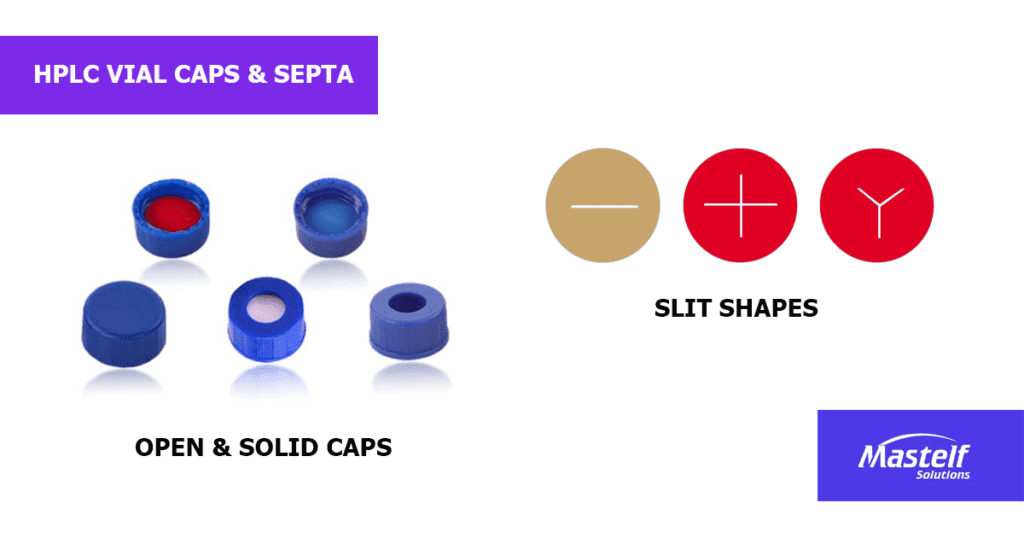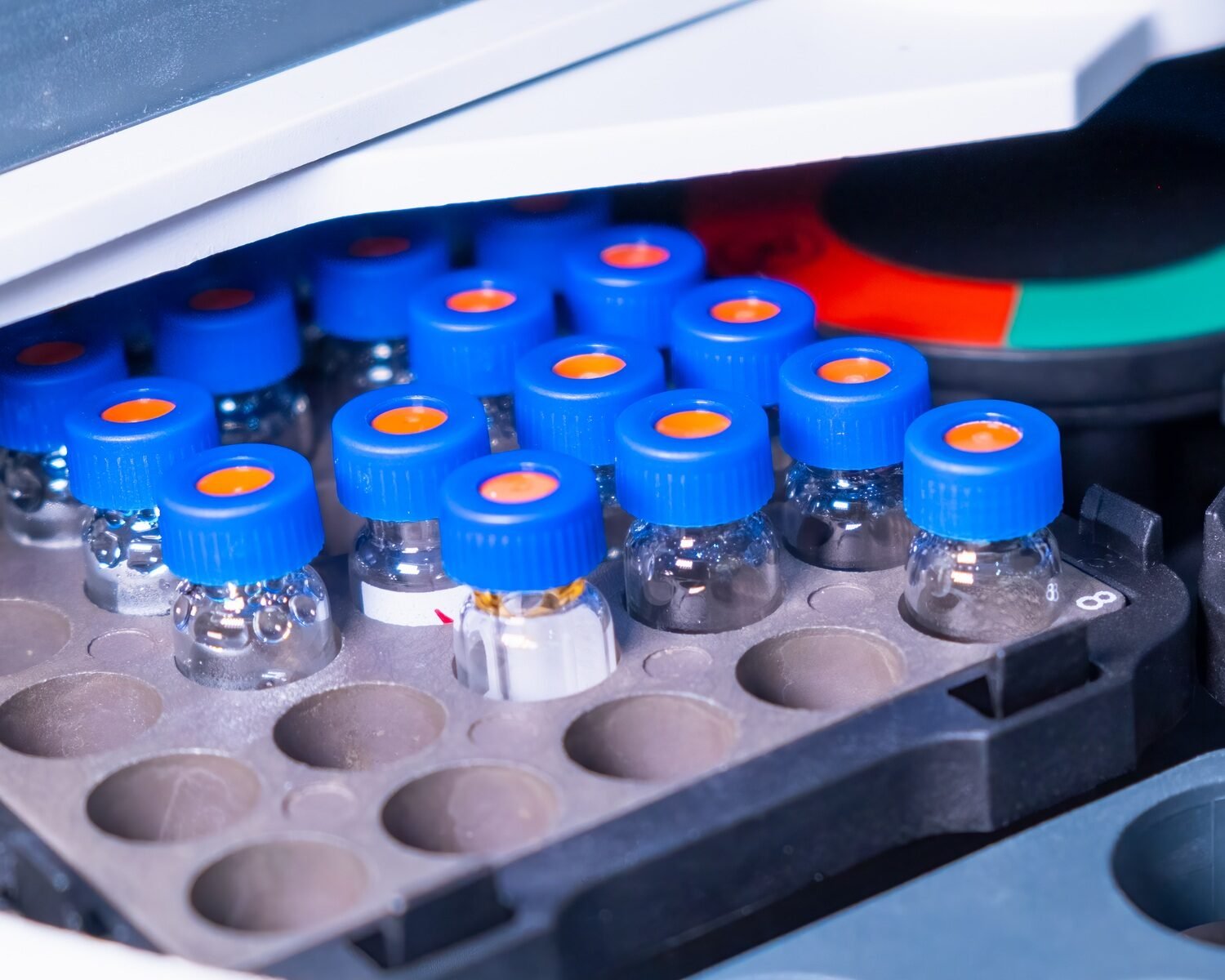When was the last time you had to deal with a bent needle or a contaminated sample during an HPLC analysis? It’s frustrating, right? I’ve been there too, and let me tell you, the solution might be simpler than you think. If you’ve been overlooking the benefits of using pre-slit septa in your HPLC vials, it’s time to reconsider. Not only can they save you time and effort, but they also make your workflow smoother. Let’s dive into why pre-slit septa are worth your attention.
The Importance of Pre-Slit Septa in HPLC
First, let’s address why pre-slit septa exist in the first place. Regular septa are fine, sure, but they aren’t perfect. Have you ever had to deal with coring, where tiny bits of the septa end up in your sample? Not a good day in the lab, right? That’s where pre-slit septa come in. They’re designed to solve these common lab headaches, offering a much smoother experience. But what do I think of that?

No More Bent Needles: Protect Your Equipment
One of the main reasons I’ve switched to pre-slit septa in my HPLC workflows is the impact on my equipment, especially needles. Let’s be real for a second—needles aren’t cheap, and replacing them frequently can eat into your budget. Pre-slit septa have a small opening that allows the needle to pass through easily. This reduces the pressure on the needle, minimizing the chances of it bending or breaking.
Think about it: how often do you find yourself having to replace bent or damaged needles? If it’s too often, the switch to pre-slit septa can save you both time and money. Wouldn’t that be great? Less stress, fewer replacements. I’m all for it.
Consistency is Key: Achieving Better Injection Accuracy
Let’s talk about consistency for a minute. One thing that drives me nuts in lab work is variability. It’s the enemy of precision, and in HPLC, precision is everything. Pre-slit septa allow for more consistent injections because they don’t force the needle to pierce a solid, rigid surface each time. The needle can easily slide through the pre-slit opening, ensuring every injection is just like the last one.
Imagine how much smoother your workflow could be if you didn’t have to worry about inconsistent injections. What do you think? Wouldn’t fewer errors and re-runs be a relief?
Goodbye to Septum Coring: Protect Your Samples
Coring is a common problem when using regular septa. It’s when small pieces of the septa get dislodged and fall into your vial, contaminating your sample. Gross, right? With pre-slit septa, this doesn’t happen. Since the slit is already there, the needle doesn’t have to “force” its way through, and you avoid pulling bits of septa into the sample.
I can’t tell you how many times I’ve had to redo an analysis because of coring contamination. Switching to pre-slit septa was a game-changer. Do you deal with sample contamination issues in your lab? If so, pre-slit septa might be the simple solution you’ve been looking for.
Are Pre-Slit Septa Better for Liquid or Gas Chromatography?
Now, you might be wondering: are pre-slit septa more suited for liquid chromatography (HPLC) or gas chromatography (GC)? In my experience, pre-slit septa are generally more advantageous for liquid chromatography (HPLC). Why? Well, let’s break it down.
In HPLC, you’re dealing with liquid samples that are typically injected multiple times for analysis. Since HPLC often involves repetitive injections from the same vial, the pre-slit septa really shine. The slit allows for consistent needle penetration without compromising the seal, which is essential for preventing leaks or contamination over multiple injections. If you’re in an environment that requires high throughput and accuracy, the pre-slit septa will keep your injections precise and your samples uncontaminated.
On the other hand, gas chromatography (GC) often operates under higher pressure, and while pre-slit septa can still work in these conditions, they’re not as critical. In GC, maintaining an airtight seal is more important because of the volatile nature of gases, and sometimes a non-slit, more robust septum is preferred to ensure no leaks under high pressure.
So, if you’re focused on HPLC, I’d recommend pre-slit septa for their ease of use and ability to maintain sample integrity over multiple injections. What about GC? A regular, non-slit septum might be the better choice for those applications to ensure a completely airtight seal.
Are Pre-Slit Septa Better for Liquid or Gas Chromatography?
Now, you might be wondering: are pre-slit septa more suited for liquid chromatography (HPLC) or gas chromatography (GC)? In my experience, pre-slit septa are generally more advantageous for liquid chromatography (HPLC). Why? Well, let’s break it down.
In HPLC, you’re dealing with liquid samples that are typically injected multiple times for analysis. Since HPLC often involves repetitive injections from the same vial, the pre-slit septa really shine. The slit allows for consistent needle penetration without compromising the seal, which is essential for preventing leaks or contamination over multiple injections. If you’re in an environment that requires high throughput and accuracy, the pre-slit septa will keep your injections precise and your samples uncontaminated.
On the other hand, gas chromatography (GC) often operates under higher pressure, and while pre-slit septa can still work in these conditions, they’re not as critical. In GC, maintaining an airtight seal is more important because of the volatile nature of gases, and sometimes a non-slit, more robust septum is preferred to ensure no leaks under high pressure.
So, if you’re focused on HPLC, I’d recommend pre-slit septa for their ease of use and ability to maintain sample integrity over multiple injections. What about GC? A regular, non-slit septum might be the better choice for those applications to ensure a completely airtight seal.
Maximizing Efficiency with Pre-Slit Septa
Now that we’ve covered why pre-slit septa are superior in preventing needle damage and sample contamination, let’s look at how they can make your workflow more efficient. Time is money in the lab, and efficiency improvements can have a big impact.
Faster Autosampler Operation
In a busy lab, you’re probably running multiple samples on your autosampler. Pre-slit septa help your autosampler work more efficiently because there’s less resistance when the needle goes through the slit. This reduces the wear and tear on your autosampler and helps it operate at its full capacity.
If you’re running an autosampler regularly, you’ll notice that pre-slit septa can actually speed up your sample processing times. Less downtime for maintenance, fewer interruptions—what’s not to love? Do you think this could make a difference in your day-to-day work?
Ideal for Multiple Injections
Pre-slit septa are perfect if you need to take multiple injections from the same vial. Since the slit stays intact after each injection, you can reuse the same vial multiple times without worrying about sealing issues or contamination. This is a lifesaver when you’re working on a project that requires repeated analysis of the same sample.
Do you ever run into issues with vials losing their seal integrity after multiple injections? If so, you’ll appreciate how pre-slit septa maintain their sealing capability, even after several uses.
Easier Maintenance and Replacemen
Lastly, pre-slit septa simplify vial maintenance. Because they’re more durable and designed for repeated use, you won’t have to replace them as often as regular septa. This means less time spent swapping out vials and septa, and more time spent doing actual analysis.
Do you agree that anything reducing downtime in the lab is a win?
The Science Behind Pre-Slit Septa
Of course, there’s some science that backs all of this up. Pre-slit septa are usually made from a range of materials like silicone or PTFE, designed to be chemically resistant. This ensures that no unwanted reactions occur between the septa and your sample, preserving the sample’s integrity. They’re also designed to maintain their shape even after multiple punctures, which is why they’re so ideal for repeat injections.
Material Composition
The most common materials for pre-slit septa are silicone and PTFE. These materials are chosen for their durability and chemical resistance, making them suitable for a wide range of solvents and analytes. The material choice ensures that your sample remains pure, with no risk of septa compounds leaching into it.
Multiple Uses in Analytical Chemistry
Pre-slit septa are not limited to HPLC. They’re widely used in other forms of chromatography and even in gas sampling. Their versatility and reliability make them a staple in many labs. Are you using them in other applications too?
Conclusion: Why Pre-Slit Septa Should Be Your Next Lab Upgrade
So, what do I think of pre-slit septa? Honestly, they’ve made my life in the lab much easier, and I think they’ll do the same for you. No more bent needles, no more sample contamination, and way less maintenance time. Plus, the added consistency in your injections is invaluable. So, why not give them a try? They might just be the upgrade your lab needs to become more efficient and reliable.
What’s your experience with pre-slit septa? Do you think they could solve some of the problems you’ve been facing in your lab? Let me know!
If you’re on the lookout for high-quality HPLC vials at sensible pricing, you won’t miss out Mastelf. With over 13 years of experience in chromatography vials, we can help you find the exact vials you need for your applications.


Our expertise ensures that you get reliable and precise products tailored to your specific requirements. Whether you’re in pharmaceuticals, research, or any other industry relying on HPLC, we understand your needs and are here to support you in making the right purchase.
Reach out to Mastelf, and let us assist you in procuring the perfect vials for your work.









